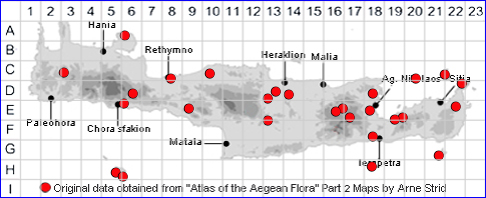
LITHOSPERMUM ARVENSE
Family:- BORAGINACEAE
Common Names:- Corn cromwell
Synonyms:- Aegonychon arvense, Buglossoides arvensis, Margarospermum
arvense, Rhytispermum arvense.
Meaning:- Lithospermum (Gr) Stone-seed. A name used by the Greek physician
and botanist Dioscorides.
Arvense(L) Of the cultivated/ploughed field.
General description:- Very variable low to medium, somewhat bristly annual;
stem often solitary, erect, little-branched.
Stems:-
a) 10-50(-90) cm.
b) solitary.
c) usually erect, sometimes branched.
d) with sparse stiff bristly hairs (hispid).
Leaves:-
1) Lowest:
a) oblong-spatula-shaped or obovate, obtuse.
b) the others oblong to linear, acute or subacute, usually erect.
2) Cauline:
a) up to 8(-10) mm wide.
b) oblong, obovate-oblong or oblong-spatula-shaped to narrow and parallel-sided
linear.
Flowers:-
a) 5 mm in diam.
b) joined together in a solitary or paired cyme of 10mm.
c) white.
1) Corolla:
a) 6-9·5 mm.
b) funnel-shaped (infundibuliform).
c) with 5 petals fused in the tube.
d) hairless inside and hairy outside.
e) white (rarely purplish).
f) 5 stamens, inserted below the middle of the corolla-tube with very short
filaments, fused with the corolla.
2) Calyx:
a) with 5 green free sepals, covered in hairs, scarcely exceeded by the corolla.
b) calyx-lobes linear or linear-lanceolate, unequal, acute.
Fruit:-
1) Nutlets:
a) 3-4 mm.
b) obliquely ovoid.
c) hard and firmly attached
d) without lateral swellings, rugose.
e) pale brown.
f) attachment scar 1-1.5 mm wide.
Key features:-
1) Nutlets 2·5-4 x 1·5-2·5 mm, with crowded, prominent tubercules.
2) Corolla 6-9·5 mm, white (rarely purplish), funnel-shaped (infundibuliform).
3) Calyx usually equalling or longer than corolla-tube in flower; with long, sparse
hairs.
4) Pedicels cylindrical in fruit.
5) Lobes acute.
6) Receptacle not oblique in fruit.
Habitat:- Cultivated, fallow and waste ground, roadsides, stony slopes.
Distribution:- C to SE Europe and SW Asia to Iran. Widespread but not too
common on Crete.
Flowering time:- Jan-June.
Photos by:- Steve Lenton
SPECIES DESCRIPTION
